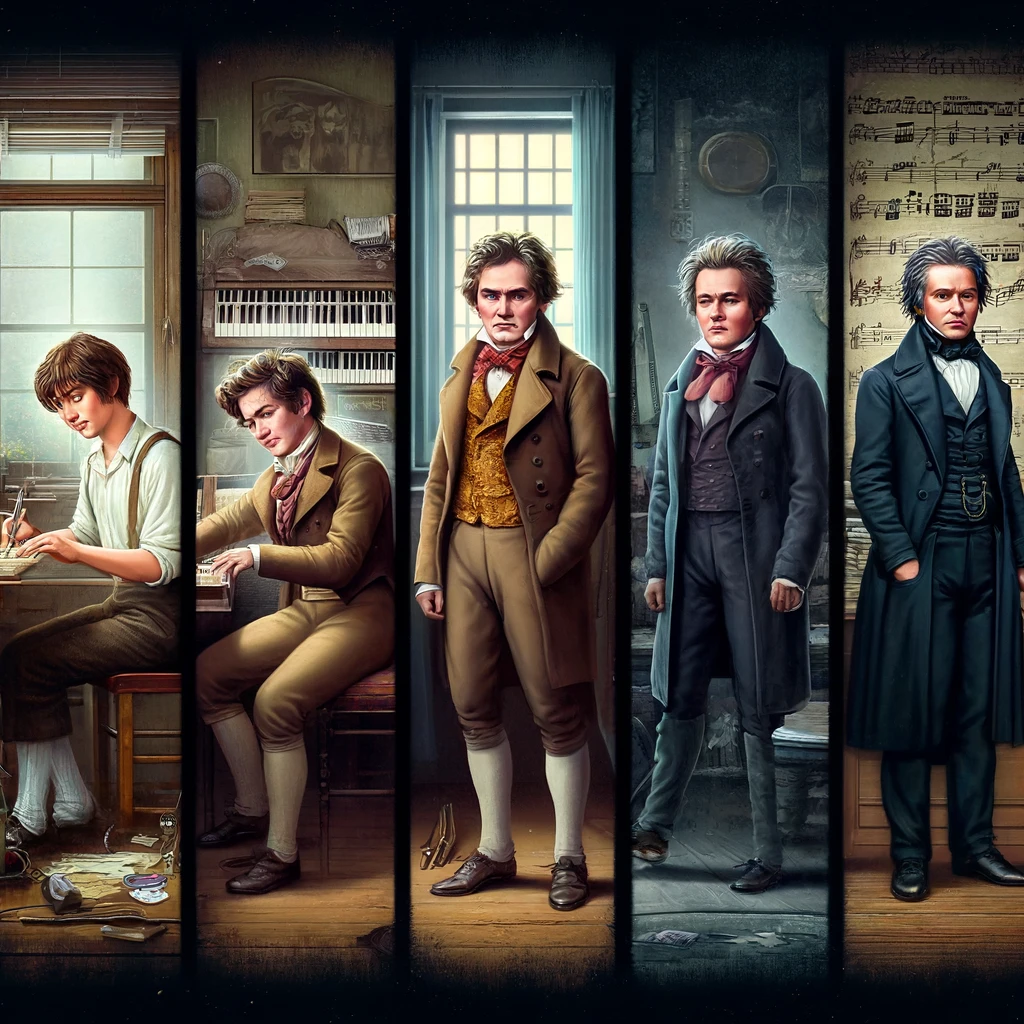
Beethoven: Unveiling His Lesser-Known Stories
Ludwig van Beethoven, a towering figure in the history of Western music, is renowned not only for his symphonies and sonatas but also for his profound impact on the course of musical development. While his major works have been extensively analyzed, there remains a wealth of lesser-known stories and insights that illuminate the evolution of his personal style. This article explores those personal elements that shaped Beethoven as both a man and a musician, revealing how his individual experiences and characteristics influenced his artistic expression.
Early Influences
Beethoven’s journey began in Bonn, Germany, where he was born in 1770. His early exposure to music through his father, Johann, and other local musicians laid the groundwork for his future innovations. However, it was his move to Vienna in 1792 that marked the true beginning of his transformative journey. In Vienna, Beethoven was initially known for his virtuosity as a pianist rather than a composer. His ability to improvise at the piano drew the attention of the Viennese aristocracy, establishing his reputation in the musical capital of Europe.
The Viennese Environment
Vienna was a hub of artistic experimentation, and Beethoven quickly absorbed the diverse influences around him. He studied with Joseph Haydn, whose strict counterpoint lessons Beethoven famously bristled against, preferring a freer, more expressive style. This tension between traditional forms and Beethoven’s innovative impulses was a recurring theme in his career, reflecting his inner struggle between the established norms of the time and his personal artistic vision.
Deafness and Isolation
One of the most pivotal aspects of Beethoven’s life was his progressive hearing loss, which began in his late 20s. As his condition worsened, Beethoven became increasingly isolated, a development that profoundly affected his music. His middle period, characterized by such monumental works as the “Eroica” Symphony and the “Waldstein” Sonata, showcases a bold, new style. These works are marked by dramatic contrasts, expanded forms, and a deeper exploration of emotion, reflecting his personal battles and isolation.
Personal Struggles and Artistic Freedom
Beethoven’s personal life was fraught with difficulties, from his tumultuous relationships with women to his legal battles over the custody of his nephew, Karl. These personal struggles seemed to fuel his creativity, pushing him to express his turbulent emotions through complex rhythms and innovative structures. His late works, including the “Choral” Symphony and the late string quartets, are testament to his artistic maturity, featuring profound philosophical depth and experimentation with form and harmony.
Spiritual and Philosophical Insights
In his later years, Beethoven’s music also reflected his deepening spiritual and philosophical insights. Works such as the “Missa Solemnis” and the Ninth Symphony incorporate themes of universal brotherhood, redemption, and the joy of human connection. These themes are not only a response to his personal isolation but also an expression of his broader views on humanity and society.
Legacy and Influence
Beethoven’s personal style evolved significantly throughout his life, reflecting not only his individual experiences and growth but also broader shifts in the cultural and musical landscapes of his time. His relentless pursuit of artistic expression and innovation left an indelible mark on the music world, paving the way for future composers and shaping the course of Western music.
Exploring the lesser-known aspects of Beethoven’s life offers a deeper understanding of the man behind the music. His evolution from a talented pianist in Bonn to a revolutionary composer in Vienna shows how his personal experiences deeply influenced his musical style. Beethoven’s story is not just one of musical genius, but also of personal resilience and relentless innovation, making him a perpetual source of inspiration.

Exploring Beethoven’s Innovations in Musical Composition
The trajectory of Beethoven’s career is not just a tale of personal evolution but also a testament to his revolutionary approach to composition. Each phase of his life brought new innovations that challenged the conventional music of his time and expanded the horizons of what music could express.
Harmonic Innovations
Beethoven’s use of harmony was particularly innovative. He expanded the traditional harmonic palette of Classical music to include more dissonant, unresolved chords that conveyed a greater range of emotion and tension. For example, the famous opening of his Symphony No. 9 in D minor features a dissonant chord that was considered highly unconventional at the time. This use of unresolved dissonance allowed Beethoven to express a deeper level of emotional complexity and intensity, mirroring his own personal struggles.
Structural Innovations
Beethoven also pushed the boundaries of musical form. He expanded the Classical structures inherited from Mozart and Haydn, making them larger, more complex, and more expressive. His third symphony, the “Eroica,” broke new ground with its length and complexity, significantly expanding the scope and scale of the symphonic form. The final movement of this symphony is a set of variations that goes far beyond the typical finale of his predecessors in both scope and emotional depth.
Rhythmic Complexity
Another area of innovation was rhythm. Beethoven often used rhythmic patterns to drive the energy and development of his compositions. His Fifth Symphony is perhaps the best example of this, where the famous four-note motif not only binds the entire symphony together but also propels it forward. This motif, consisting of three short notes followed by a long note, creates an incessant, driving rhythm that has become one of the most recognizable in music history.
Beethoven and the Piano
Beethoven’s personal evolution as a composer can also be seen in his piano sonatas. These works chart his transition from a Classical composer into an early Romantic one, showcasing his growing emphasis on emotional expression and structural innovation. His “Moonlight Sonata,” with its dreamy first movement, contrasts sharply with the norms of his time, which typically reserved such tonal and dynamic contrasts for the central or final movements of pieces.
Late Period: A Deeper Introspection
In his late period, despite his increasing deafness, Beethoven composed some of his most profound works. These include the late piano sonatas (like Sonata No. 32 in C minor, Op. 111), which feature complex structures and an introspective quality that seems to reflect his internal dialogue with his own mortality and legacy. Additionally, his “String Quartet No. 14 in C♯ minor, Op. 131” is often considered a pinnacle of string quartet writing, showcasing an unprecedented range of emotions and ideas across its seven connected movements.
Influence on Future Generations
Beethoven’s personal style and innovative techniques had a profound impact on later composers. Figures such as Johannes Brahms, Richard Wagner, and even Gustav Mahler took cues from Beethoven’s developments, particularly his expansions of symphonic form and expressive range. His legacy is a testament to the power of music as a means of personal expression and cultural communication.
Conclusion
Beethoven’s personal style evolved in parallel with his life experiences, reflecting his challenges, his triumphs, and his unyielding commitment to artistic exploration. The exploration of these lesser-known aspects of his life provides a fuller picture of Beethoven as not just a composer, but as an innovator and a human being facing profound challenges. Understanding the depth and breadth of Beethoven’s personal evolution helps to appreciate why his music remains so powerful and relevant today.